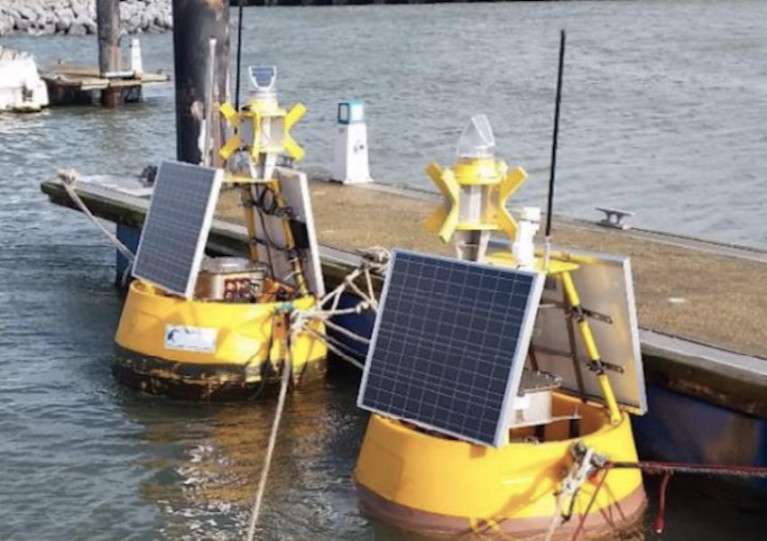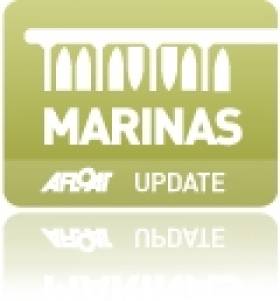Displaying items by tag: fenit harbour
Busy Year for Fenit Harbour in 2022
It was a busy year for Fenit Harbour in Co. Kerry as the south-west port handled in 2022 more than a dozen vessels and roughly 24,000 tonnes of cargo.
The vast majority of the cargo is from Liebherr cranes manufactured at its plant of Fossa outside Killarney as Afloat has reported down the years. Cargo including ship to shore (STS) container cranes have been exported to countries such as the UK and the USA.
The figures on Fenit Harbour were provided by the Central Statistics Office (CSO) which as Afloat reported last week issued a full breakdown of all traffic in and out of Irish Ports which last year handled 53 million tonnes of goods.
As for the Co. Kerry port, the CSO said that 13 vessels were handled in 2022 with a combined gross tonnage of 155,000. In the previous year, the same number of cargo ships berthed at the port however several of the ships handled were considerably larger in 2022.
The Independent.ie has more statistics on the harbour.
Data Buoy Deployment for Fenit Harbour Dredge Monitoring
LCF Marine have planned to deploy two data buoys in Tralee Bay this week as part of dredge monitoring for Fenit Harbour.
The buoys were scheduled to be deployed on Monday 23 January subject to weather and operational constraints.
If the deployment is delayed due to the weather, the deployment will be carried out on the next viable tide and weather window.
The buoys will be in place for 10 weeks at the coordinates indicated in Marine Notice No 3 of 2023, which is attached below.
These data buoys will be deployed on a single point mooring consisting of 19mm diameter chain and a on-tonne sinker weight.
A lantern on each buoy will give out five yellow flashes every 20 seconds. The light is visible for up to three nautical miles.
The data buoys are yellow in colour and each buoy is equipped with a navigational beacon, radar reflector, St Andrew’s cross, GSM antennas, solar panels, lead batteries, instrument cables and a TechWorks Marine Black Box.
Works vessel An tOileanach (callsign EI-5930) has been employed to deploy the buoys. During the deployment and recovery, radio transmissions will be conducted on VHF channels and will be monitored on Channel 14 (Fenit Harbour working channel) and Channel 16.
During operations the work vessel will be restricted in its ability to manoeuvre, and all other vessels are requested to leave a wide berth during the deployment operations.
Data Buoys for Oceanographic Monitoring of Fenit Harbour Set to Deploy in Tralee Bay
TechWorks Marine advises that it is set to deploy two marine monitoring buoys in Tralee Bay as part of environmental oceanographic monitoring for Fenit Harbour.
The DB 500 data buoys will be deployed tomorrow, Friday 26 March, weather depending, and will be in place until at least Friday 30 April, after which they will be retrieved by a chartered vessel.
A flat-bottomed aqua-cultural work barge named the Kerry Pearl will be deploying the buoys. During deployment and recovery, VHF Channels monitored will be Channel 14 (Fenit Harbour working channel) and Channel 16.
During the extent of deployment, vessel traffic will need to avoid the area.
Full details including exact location coordinates are included in Marine Notice No 14 of 2021, which can be downloaded below.
Fenit Harbour Marina. Yacht & Boat Berths & Storage in Kerry
Fenit Harbour Marina is tucked away in Tralee Bay, not far south of Shannon Estuary. It offers a superb cruising ground being within a days sail of Dingle and Kilrush, the marina also provides a convenient base from which to visit inland attractions such as the tourist towns of Tralee and Killarney. This 120 berth marina accommodates boats up to 15m LOA and benefits from deep water at all states of the tide. The small village of Fenit incorporates a grocery store as well as pubs and restaurants while among the local activities are horse riding, swimming from the nearby sandy beaches.

























































